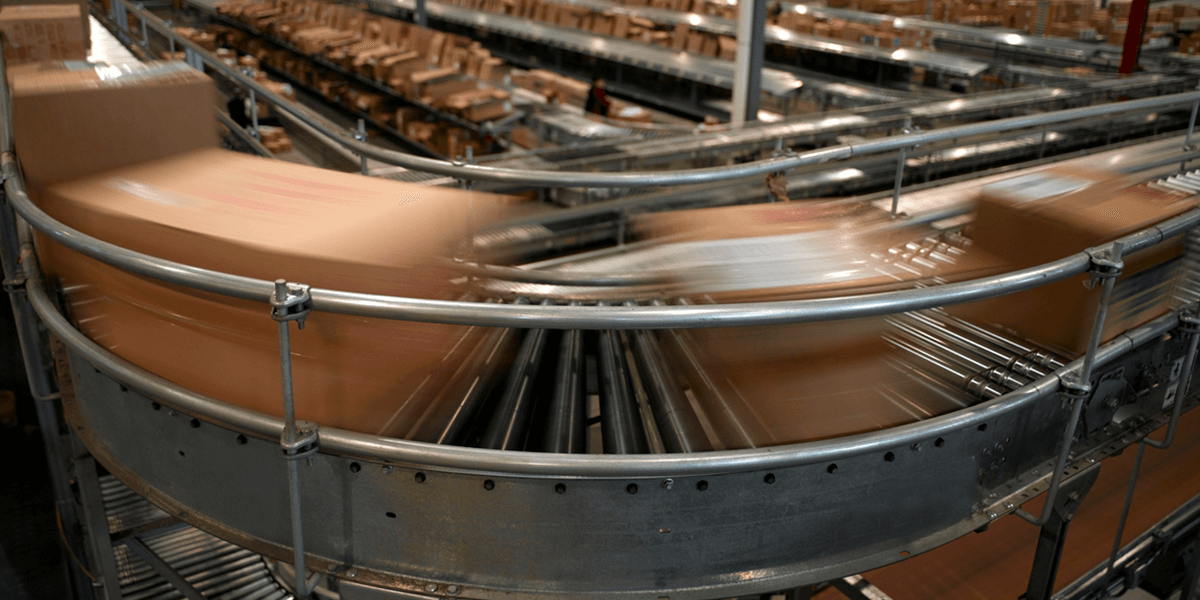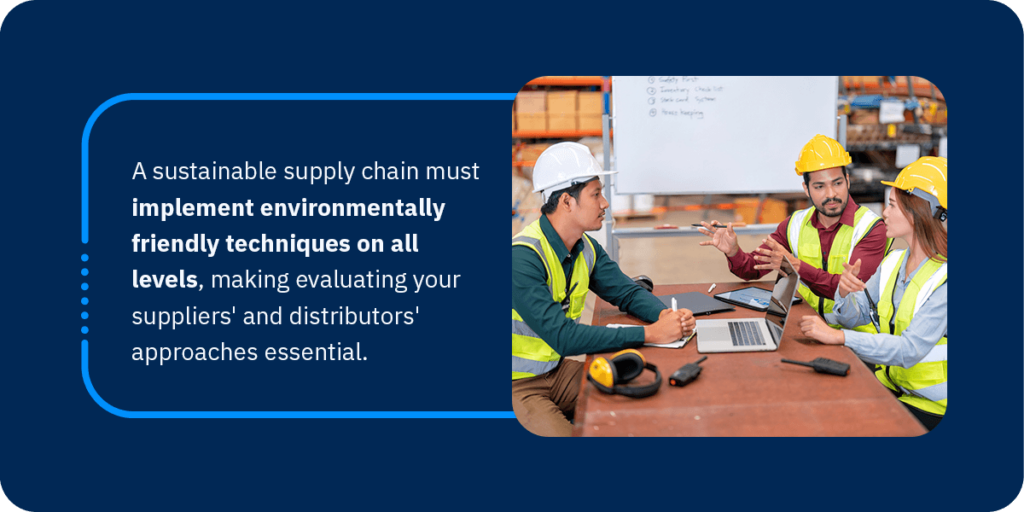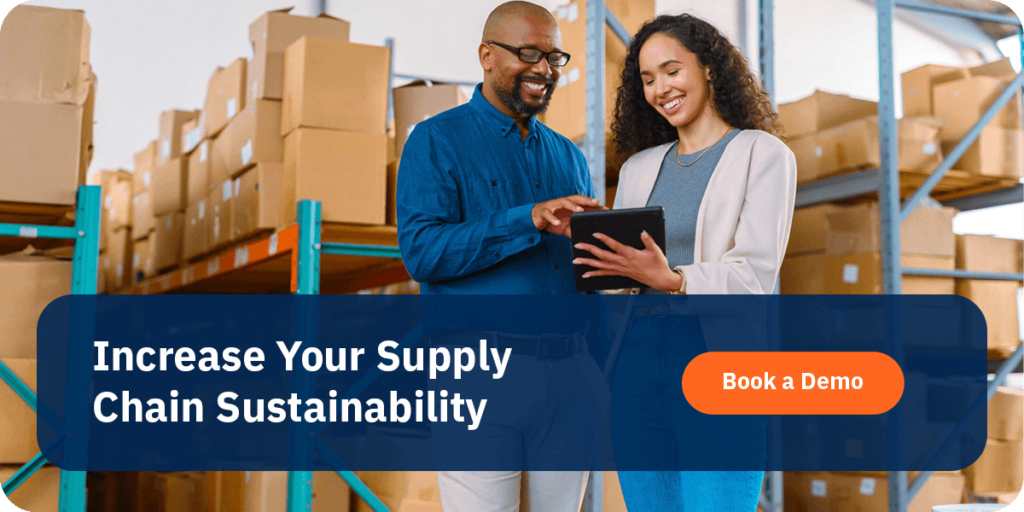How to Build a Sustainable Supply Chain

November 22, 2023
Concerns about climate change continue to grow worldwide, resulting in pressures for more sustainable practices. Supply chains can account for more than 90% of organizations’ greenhouse gas emissions, making evaluating processes and reducing carbon footprints crucial.
Companies can use many strategies to minimize waste, optimize operations, and limit carbon emissions in their supply chains. These six examples are the initial steps for building a more sustainable supply chain.
1. Map Your Supply Chain Operations
Change is most effective when you address your supply chain’s most pressing concerns. By mapping out your supply chain stages, you gain an in-depth perspective of your environmental impacts. You can outline every step, from acquiring raw materials to consumer distribution. In every stage, focus on sustainability elements such as:
- Resource consumption: Track the energy and materials you use to complete each stage. For instance, monitor energy consumption during manufacturing.
- Process efficiency: The mapping process helps you identify inefficiencies that could impede sustainability efforts. For example, you could consolidate transportation routes to minimize additional driving and fuel consumption.
- Waste production: From excess packaging to fuel emissions, different supply chain stages generate significant waste. Process maps make it easier to notice and address waste.
Companies can use the end-to-end perspective to identify their effect on the world’s climate. Structuring your sustainability efforts around these pressing concerns helps you make the most effective changes.
2. Set Goals and Metrics
After identifying wasteful or inefficient areas, you can define metrics for change. Specific measurements and key performance indicators (KPIs) let you monitor your progress instead of focusing on vague goals.
For example, your organization’s packaging waste could be one of the most pressing sustainability concerns. A measurable goal and KPI lets you track your progress as you try various approaches to reduce waste. You could track waste amounts each month and note your strategies’ effectiveness. Then, adjust approaches as necessary.
Metrics also provide data you can share with shareholders and other key figures involved in the changes. You can present how your sustainability efforts impact revenue, productivity, consumer buying patterns, and other essential performance aspects.
3. Evaluate Your Partnerships

Supply chains require collaboration to succeed — different supply chain stages are interconnected through partnerships. A sustainable supply chain must implement environmentally friendly techniques on all levels, making evaluating your suppliers’ and distributors’ approaches essential.
Open communication allows you to discuss your sustainability goals with suppliers. You can explain your targeted sustainability efforts, implementation plans, and the metrics you will use to monitor their progress. Work together with suppliers to identify other areas of concern and ways to address them.
It’s also important to discuss your performance expectations with suppliers. You should explain your sustainability goals and the actions you expect from them. Organizations can also provide resources and training materials to make these transitions easier. Recognition and rewards are also ways to acknowledge progress.
If partners are unwilling to change their techniques, it could be necessary to find new partnerships instead.
4. Minimize Waste Production
Excessive waste production generates significant greenhouse gases, adding to global climate change effects. In addition, plastic materials do not break down naturally and harm ecosystems and wildlife, causing further issues. Humans produce over 400 million tons of plastic waste each year, making it necessary to reduce production wherever possible.
Supply chains produce waste throughout manufacturing, packaging, and transporting procedures. Many supply chains begin sustainability efforts by cutting back on packaging and production waste. You could use various strategies, such as:
- Enhance your inventory management: Expired products contribute to a significant portion of supply chain waste. Ineffective inventory management can cause you to overlook expiration dates, resulting in unusable products. By implementing a new inventory management strategy, you can increase visibility and minimize waste. Software solutions, such as vendor managed inventory (VMI), help you optimize shipments and stock visibility.
- Switch to reusable materials: You can also analyze your current materials and look for ways to switch to more sustainable options. Excessive plastic in manufacturing or packaging can quickly increase your organization’s carbon footprint. You can switch to recycled materials or reusable options to decrease waste generation.
- Use smaller packaging: Using large packages for small items is another way to increase waste. Look for packages that fit products closely but in as few layers as possible. It’s important to protect products, but ensure you don’t use too many materials without a purpose.
5. Address Transportation Issues
Another notable way to improve your sustainability is by evaluating your supply chain’s transportation emissions. Many supply chains use trucks to transport products and raw materials. Large vehicles burn considerable amounts of gas and diesel, which is the largest producer of greenhouse gas emissions.
You can decrease your emissions with approaches such as:
- Shortening transportation routes: You can evaluate distribution routes and look for ways to reduce time spent on the road. For instance, partnering with local suppliers shortens transport time and fuel emissions. Or, you can plan shipments to optimize vehicle space. The more you fill a truck, the fewer trips you need to take.
- Using electric vehicles: Electric vehicles don’t burn gas while operating, considerably limiting their environmental impact. Companies could switch a few or all of their fleet vehicles to electric options to reduce carbon emissions.
6. Invest in Technology
Various technological solutions can assist your sustainability efforts. Automated systems monitor inventory as it moves through the supply chain, minimizing visibility issues. Collaborative tools make it easier to communicate and track sustainability goals with your partners.
For instance, Electronic Data Interchange (EDI) streamlines document exchanges between supply chain partners. It replaces manual document procedures with automation, allowing you to boost efficiency. Simplified communication makes it easier to track and communicate sustainability goals. By using electronic exchanges, you reduce waste production of ink, paper, and toner. EDI processes are completely digital, requiring less manual handling and physical office presence. With fewer in-person processes, your organization can decrease energy consumption. Automating tasks with EDI also reduces human error, allowing your organization to rely on easily repeatable processes and reinvest resources in more sustainable initiatives.
VMI is another tool that optimizes inventory fulfillment, which can help you achieve sustainability goals. Automated data flows and advanced forecasting increase replenishment accuracy. In turn, you can minimize waste in various operational areas. Ongoing reporting and data logs allow you to track sustainability metrics more effectively.

Increase Your Supply Chain Sustainability
Companies can take many measures to increase sustainable practices in their supply chains. Aspects such as waste production, fuel consumption, and manufacturing inefficiencies can increase carbon emissions. By evaluating current practices and identifying sustainability issues, businesses can address the most pressing concerns.
VMI, EDI, and other software solutions can help you reach sustainability goals. From strengthening supplier relationships to boosting visibility, these solutions can transform your supply chain.
To learn more about how to build a sustainable supply chain with EDI and VMI, book a demo with TrueCommerce today.
Share this post:
Stay ahead of the competition
Get expert supply chain insights delivered directly to your inbox weekly.